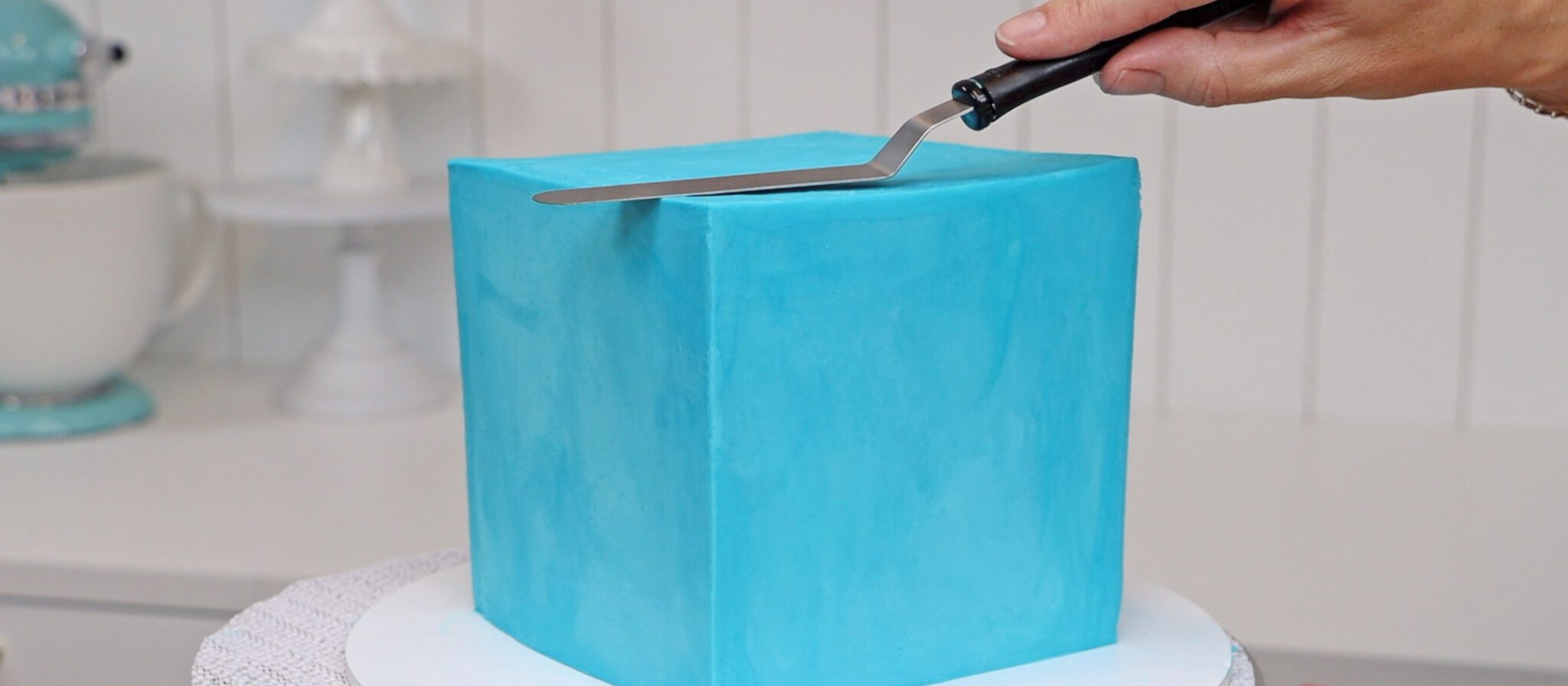
Square cakes are notoriously tricky to frost so in this tutorial I'm going to show you how to frost a square cake with smooth sides and sharp edges using no special tools!
First, choose a cake board big enough for your cake. You'll need at least two inches around the edges of the cake for frosting and decorations and to grip onto. Use a dot of buttercream to attach your first layer of cake onto the cake board. I'm using my Very Vanilla Cake. Then add your filling.
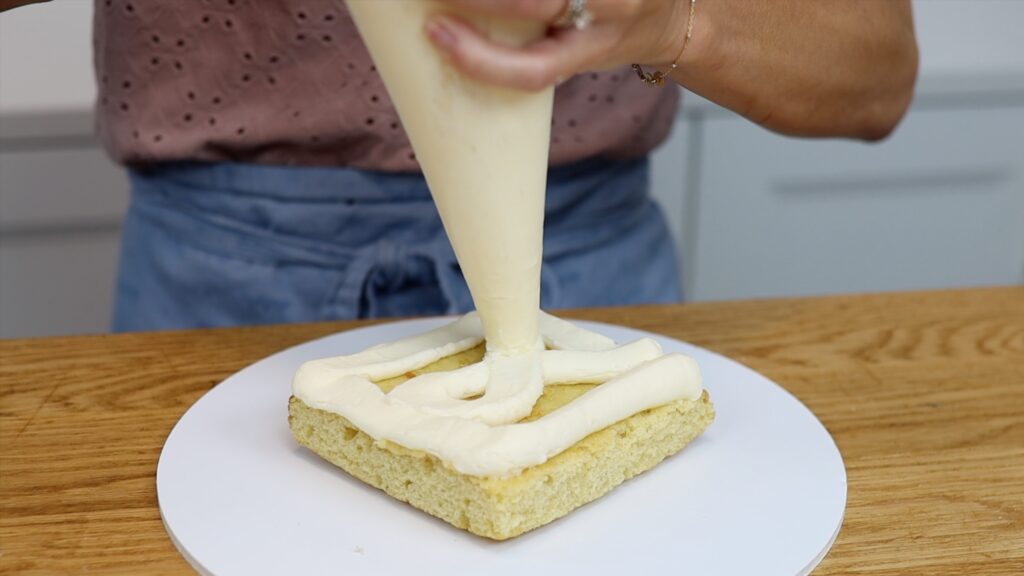
This is my 4 Minute Buttercream. You can spread it straight on or pipe it on first, which is quicker and neater. Spread the filling up to the edges of the cake to cover the top completely.
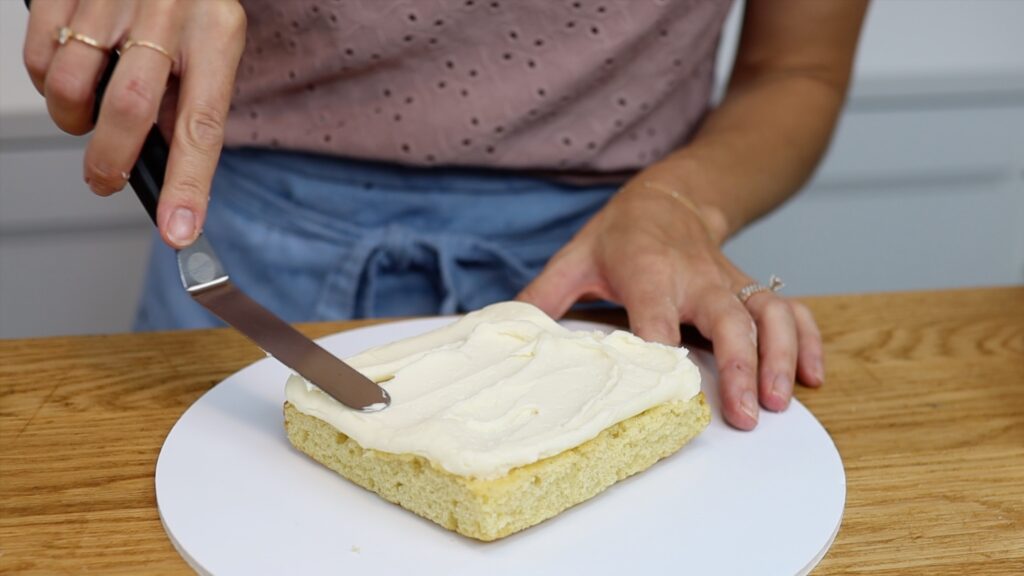
Place your next cake layer on top and repeat to assemble your cake.
I really recommend chilling your cake layers before you assemble your cake. Cold cake layers are much easier to work with than when they're at room temperature. I'm using the extra cake scraps from the end of the sheet cake to add an extra layer to my cake. To do this, pipe or spread buttercream between the pieces to attach them together.
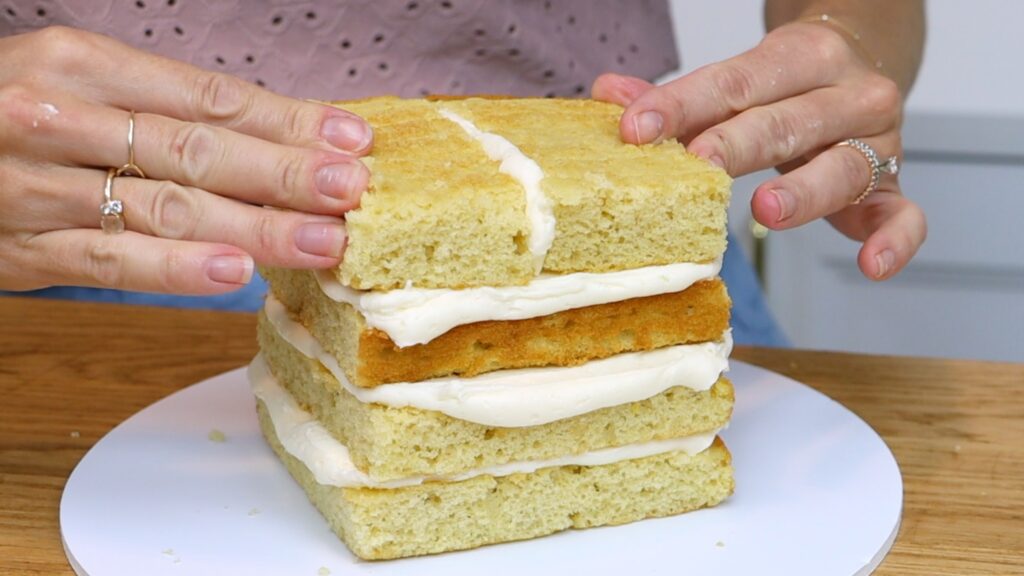
After assembling your cake, spread around the cake with an
If your cake layers are cold you can frost this cake straight away. If not, put the cake into the fridge for an hour or the freezer for 30 minutes.
If you're wondering how to frost a square cake without crumbs, the answer is a crumb coat. This is a very thin layer of frosting that traps any crumbs that come off the cake so that they don't get through into your final layer of frosting.
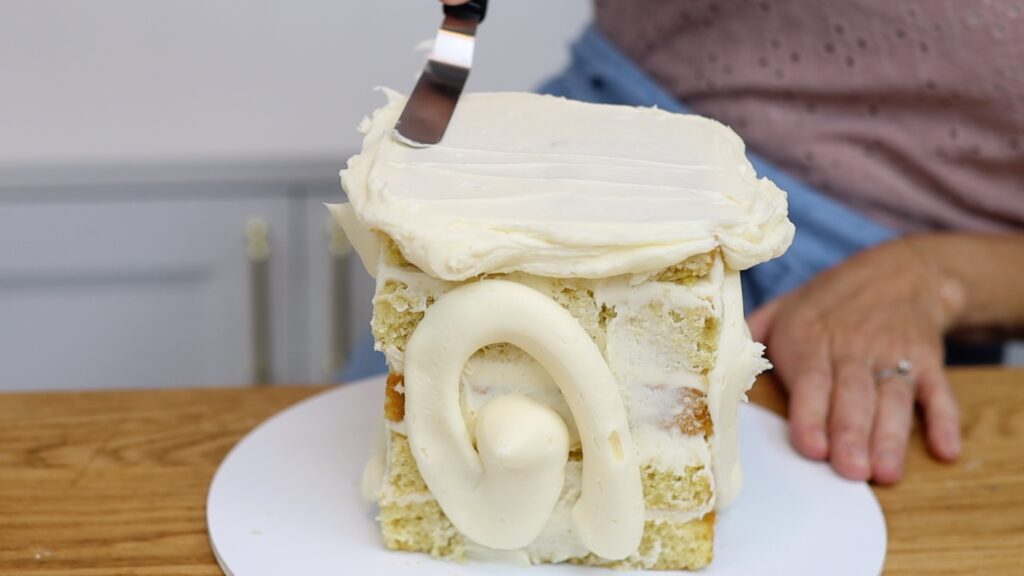
This crumb coat does not need to be neat because it's going to be completely covered up in a moment. However, it does need to cover all of the cake so that there's none exposed.
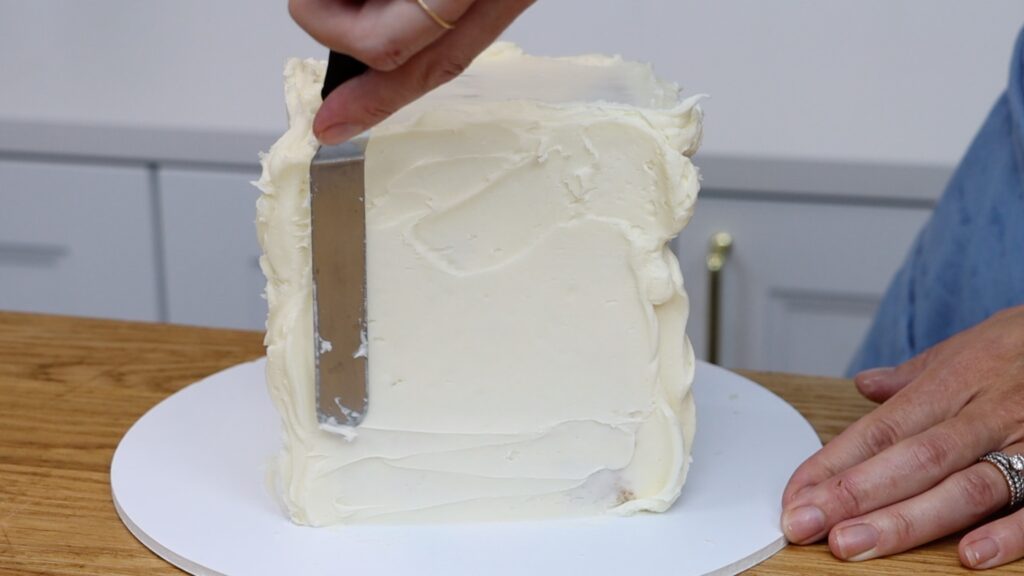
You don't want any of this frosting to stick out around the edges of the cake or above the top edge of the cake. If there are bulges, when you chill this before adding your final layer of frosting they'll get cold and hard and be difficult to frost over. Use your
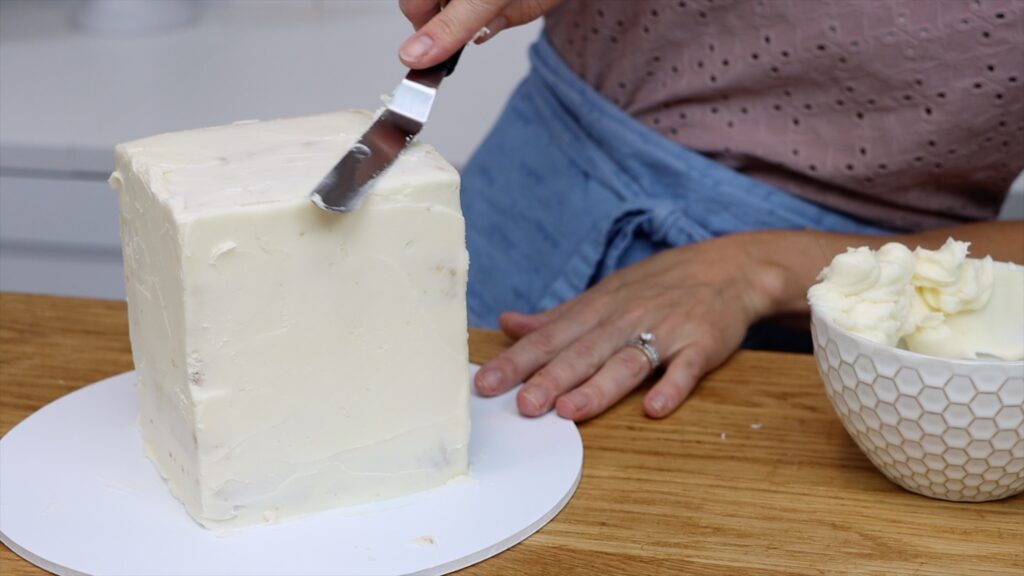
Put the cake in the fridge for 30 minutes or the freezer for 15 minutes to set this crumb coat.
Have you seen the acrylic discs you can buy for round and square cakes? They're effective but expensive! Make your own by using any piece of cardboard and a ruler.
Measure and draw a square the same size as your cake plus two centimeters. This will allow for one centimeter of frosting on each side of the cake. If you prefer to work in inches, add one inch. Cut the square out and put it on a piece of parchment paper a few inches bigger than the square.
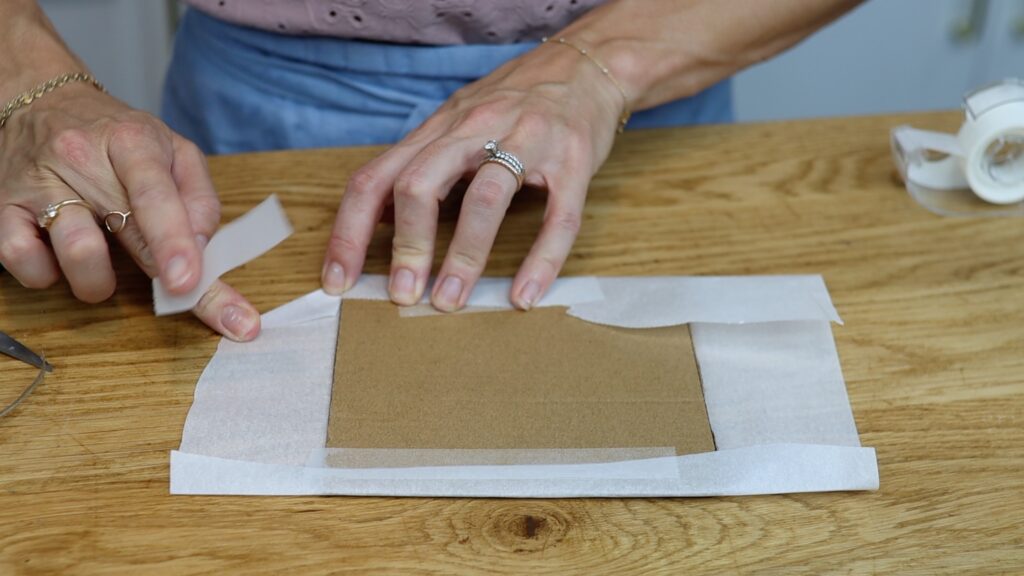
Wrap the parchment paper tightly around the cardboard as if you're wrapping a present. This makes it non-stick and also food safe, which is important because it's going to touch your cake. Be really generous with tape to attach the parchment paper! Parchment paper is non-stick so tape isn't as effective as it would be on normal paper.
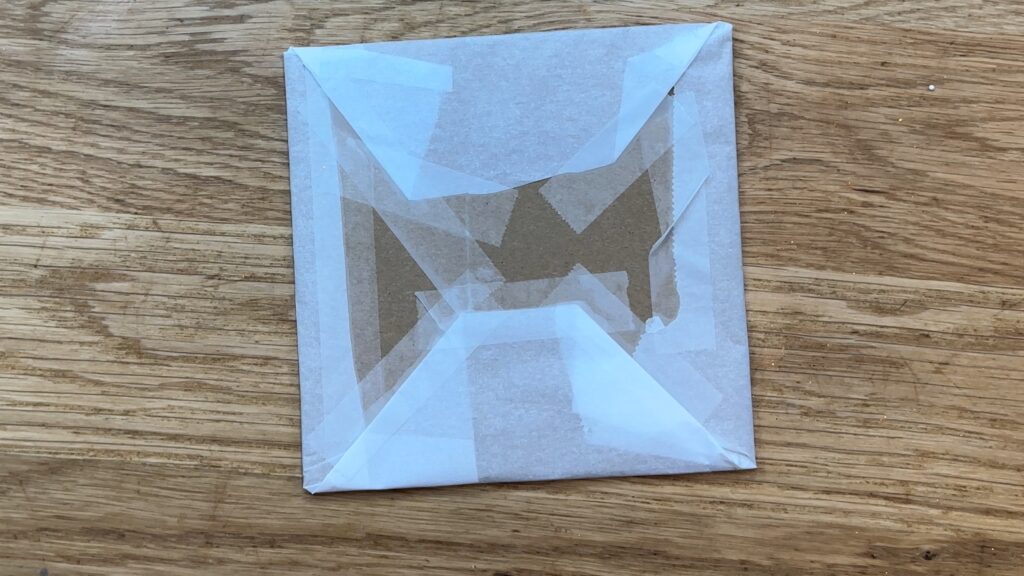
When the crumb coat has set, spoon a big dollop of frosting onto the top of the cake. Spread it so that it completely covers the top of the cake and sticks out over the edges. This is very important to get those nice sharp angles from the sides onto the top of the cake later.
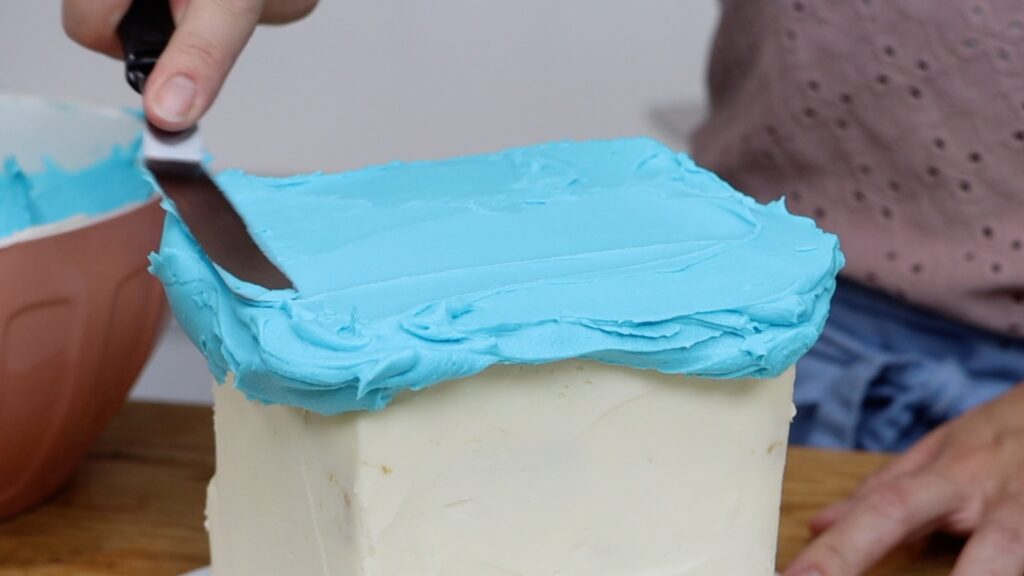
Lower your cardboard square onto this frosting on top of the cake. Adjust it to center it so that there is the same amount sticking out on every side of the cake. Then push down to attach it.
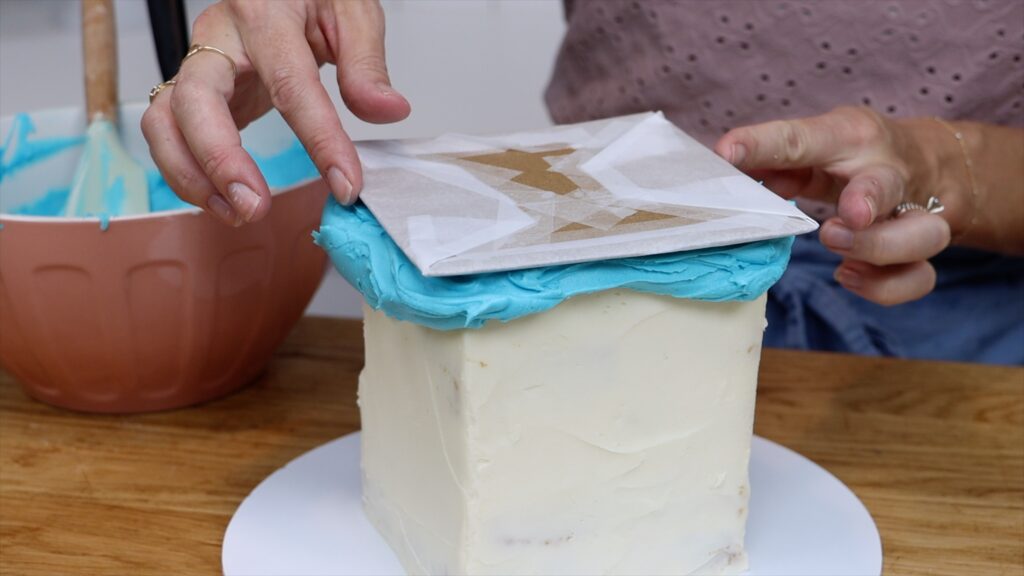
Now spread frosting around the sides of the cake, completely covering it up. You're aiming for an even thickness of frosting all over the cake. Spread the frosting all the way up so it sticks up above the top edge and all the way down to the cake board. Make sure the frosting sticks out over the edges of the sides of the cake for sharp angles later.
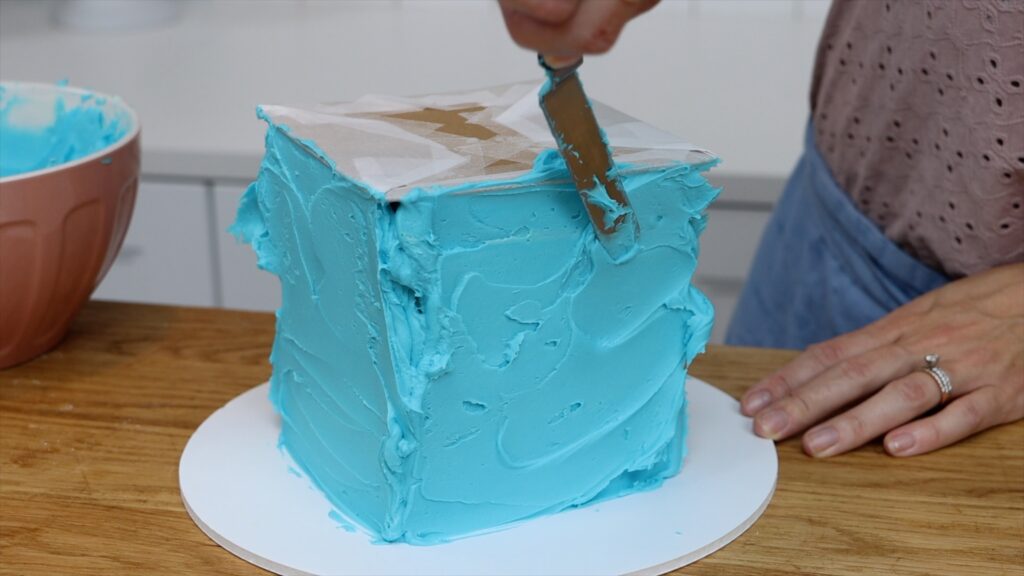
Now switch to a cake comb and scrape from one edge to the other. You'll immediately see air pockets where the frosting isn't as thick as it is over the rest of the cake.
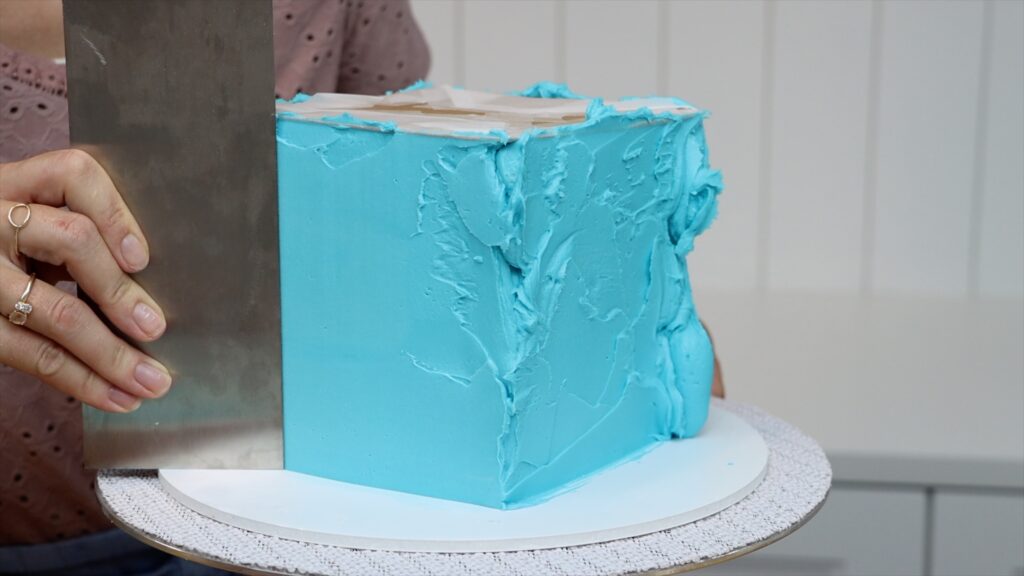
Spread more buttercream over those areas or air pockets and then scrape again. The extra buttercream will fill in the gaps and your cake comb will scrape off the excess.
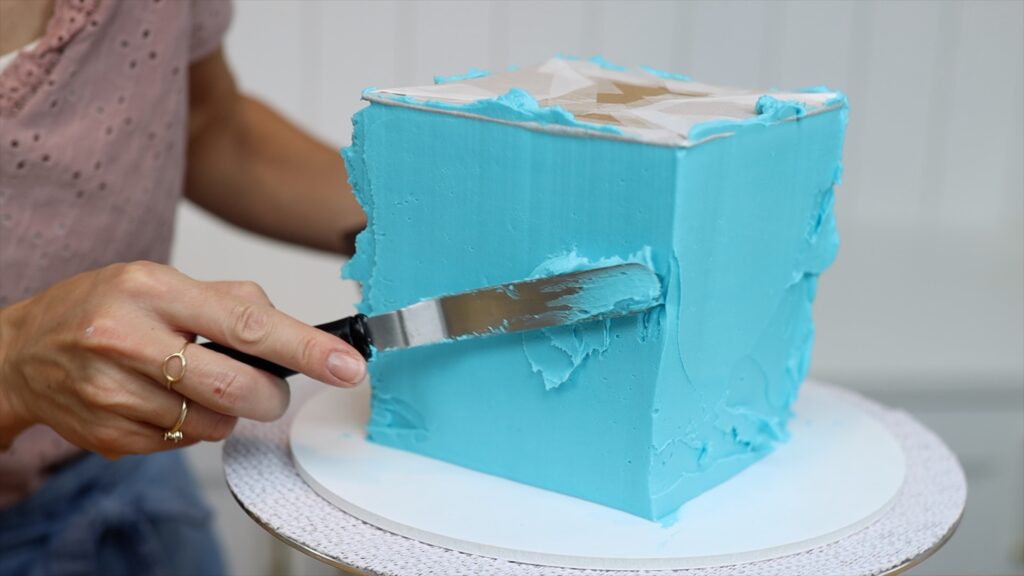
You'll find what works best for you here. I like to do most of my scrapes towards myself but also switch to scrape away from yourself. This feels very awkward but it will give you the sharpest angles on the sides of your cake.
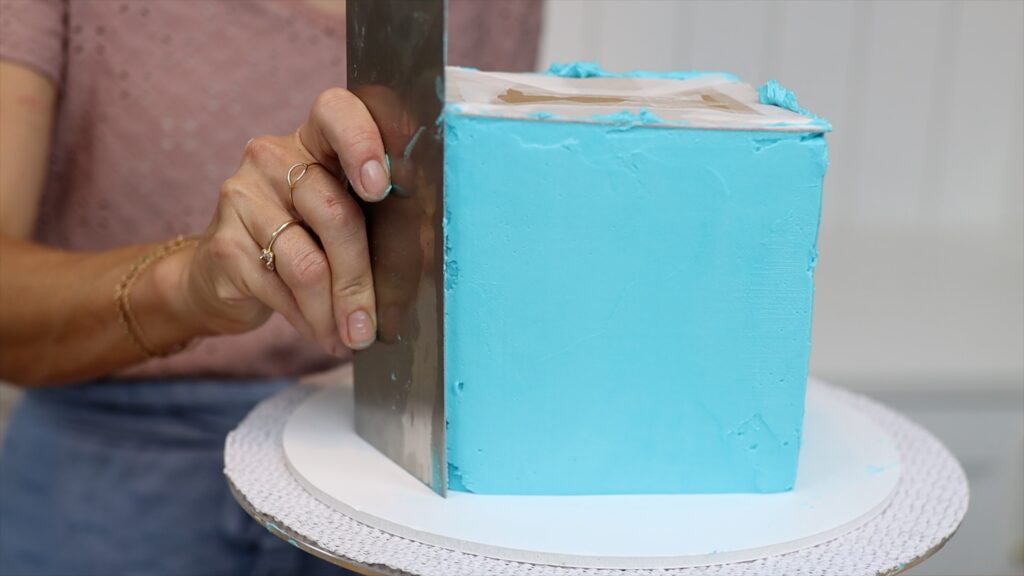
This is quite a tedious process. It takes a long time to get very smooth sides and sharp edges all around the cake. It's much slower than frosting a round cake! If you run out of time and need to take a break or if you get frustrated because you can't get your sides any smoother or your edges any sharper, pause. Try this quick hack!
After getting the frosting as smooth as you can, here's a quick way to get it even smoother. Put the whole cake into the fridge for at least an hour. Cover your frosting bowl with cling film or Saran Wrap so it stays soft. When you take the cake out of the fridge, the frosting will be firm which is useful for this. Now with just another very thin layer of frosting you can get very smooth sides and very sharp edges.
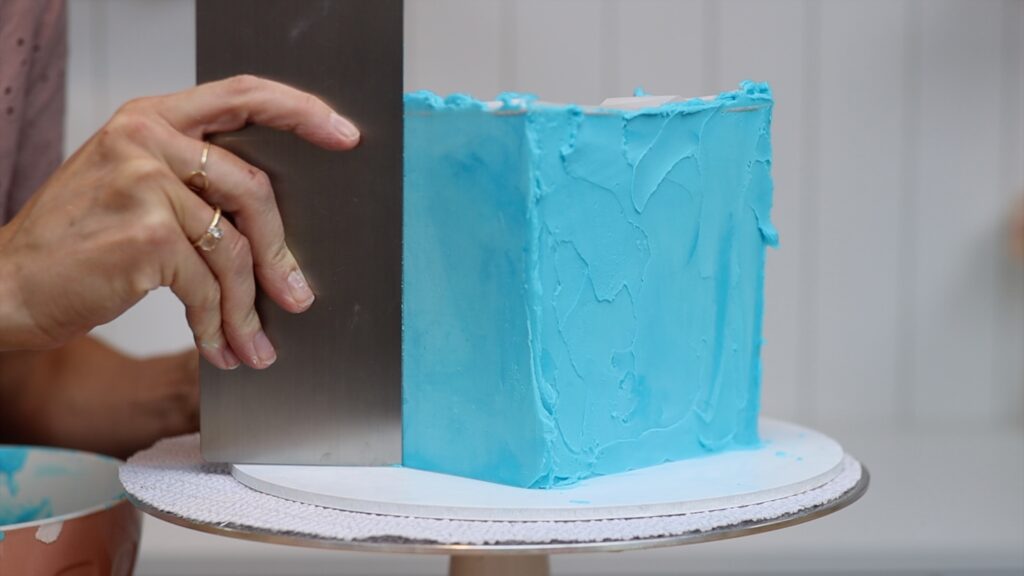
This works because this final very thin layer of frosting sits on top of the cold frosting so it will chill very quickly. As it chills, it sets, and as you scrape the excess it will fill in any gaps in the cold frosting underneath it, leaving a smooth surface on top.
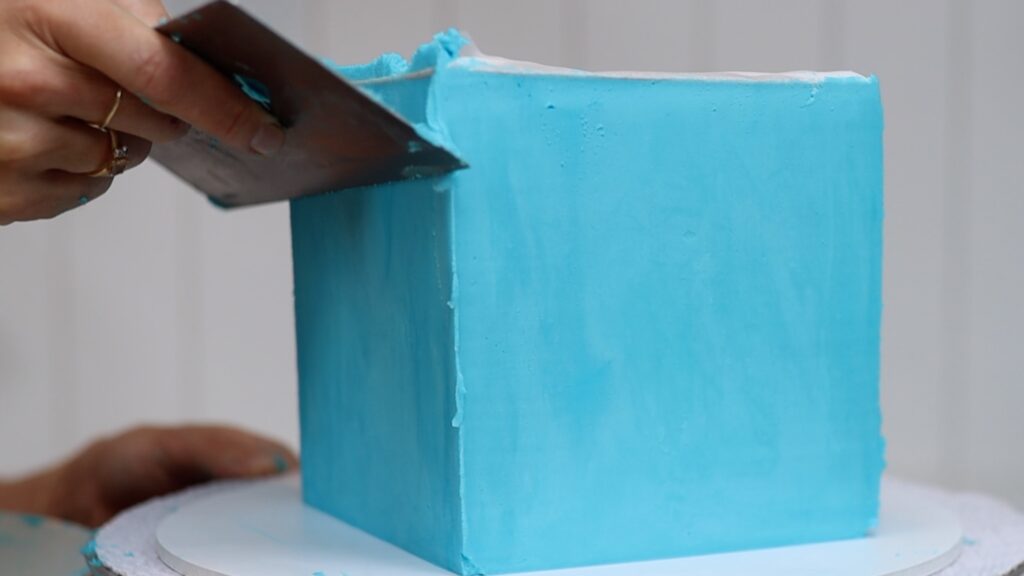
Frosting sets very quickly on a cold cake and when it does, you'll tear the buttercream as you scrape. If this happens, dip your cake comb into hot water or if it's a metal cake comb you can run a blowtorch up and down the edge. Scrape again and the hot comb will glide over the buttercream. You might find that scraping upwards from the cake board to the top of the cake will help smooth out any final texture in your frosting.
Final step: use a very sharp knife to slice just underneath the cardboard template. You'll separate the parchment-wrapped cardboard from the frosted cake. It will be easy to lift the square off and you'll leave sharp edges around the top of the cake.
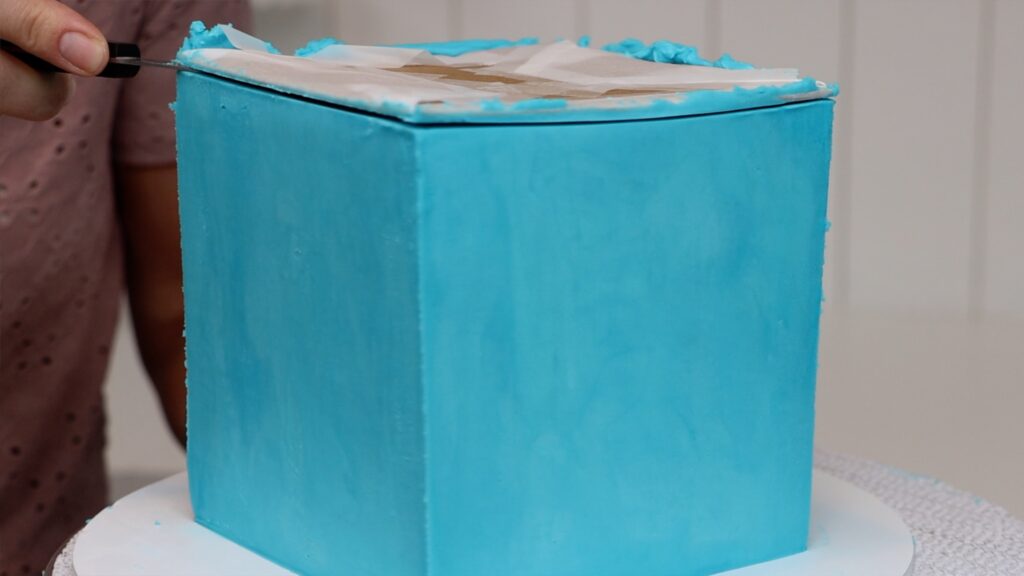
You might need to fill in any indents or air pockets on the top of the cake, where the cardboard didn't press all the way down onto the frosting you initially spread there. Since the top edges of the cake are so firm, they'll hold their shape even as you spread and smooth this extra frosting.
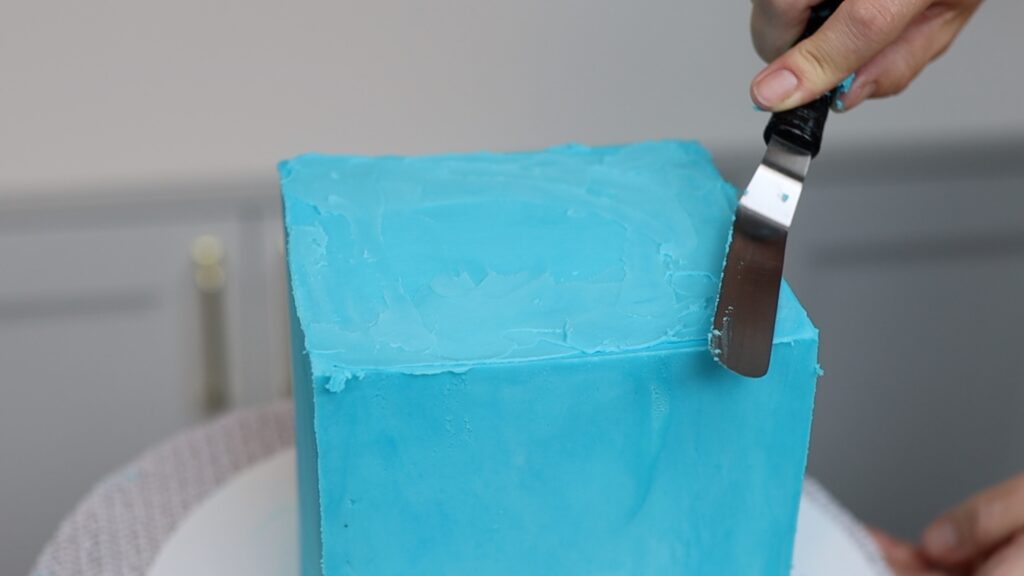
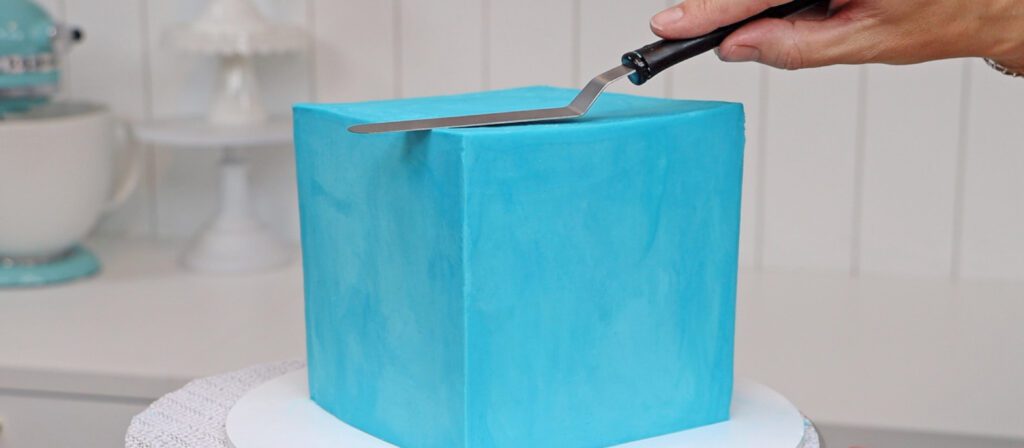
So without any special tools you can bake, assemble and frost a square cake with smooth frosting and sharp edges! I hope this tutorial has been useful. If you enjoyed it, visit my cake school to learn hundreds of cake decorating techniques and designs.
You can watch a video of this tutorial on how to frost a square cake here:
